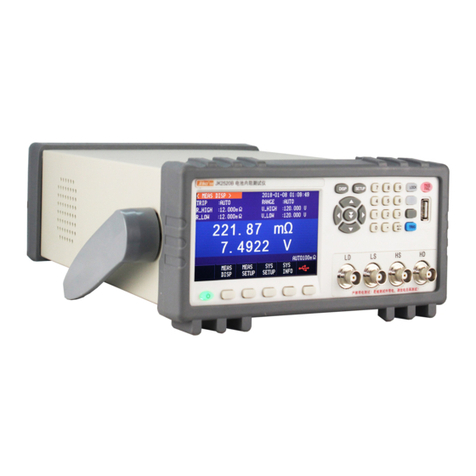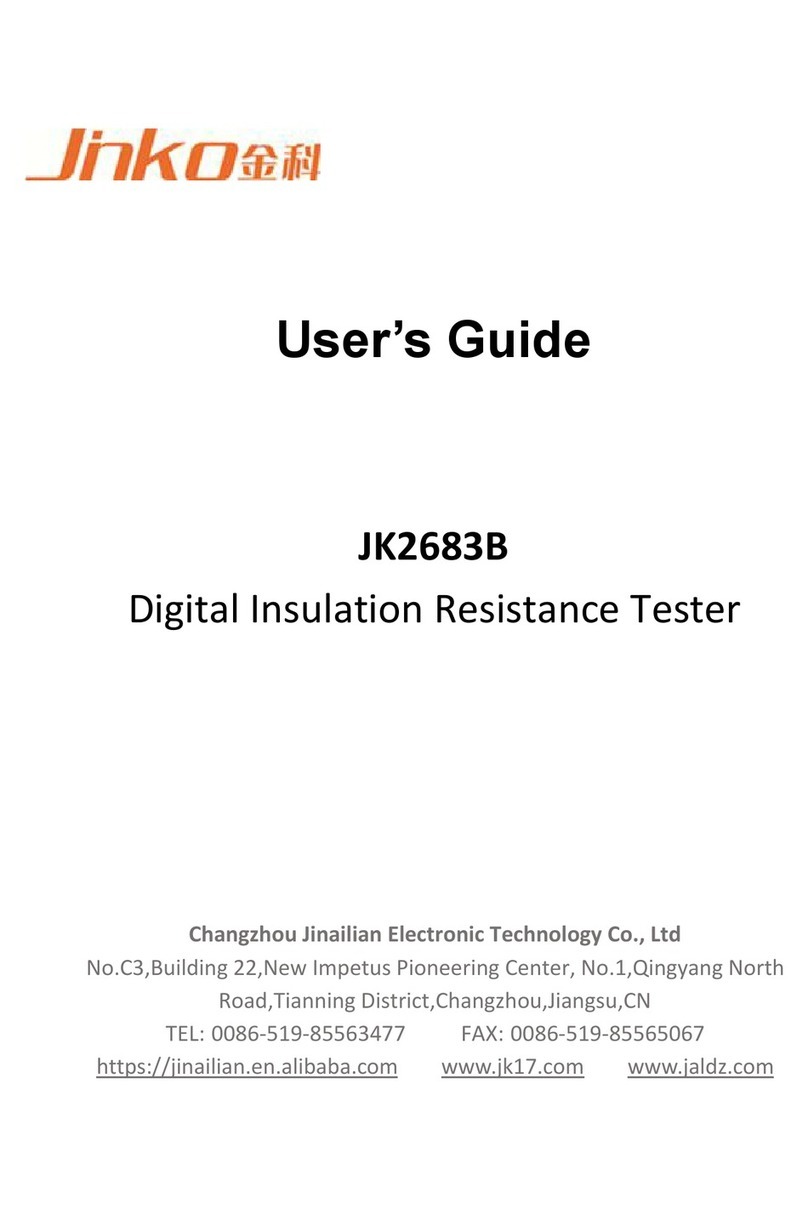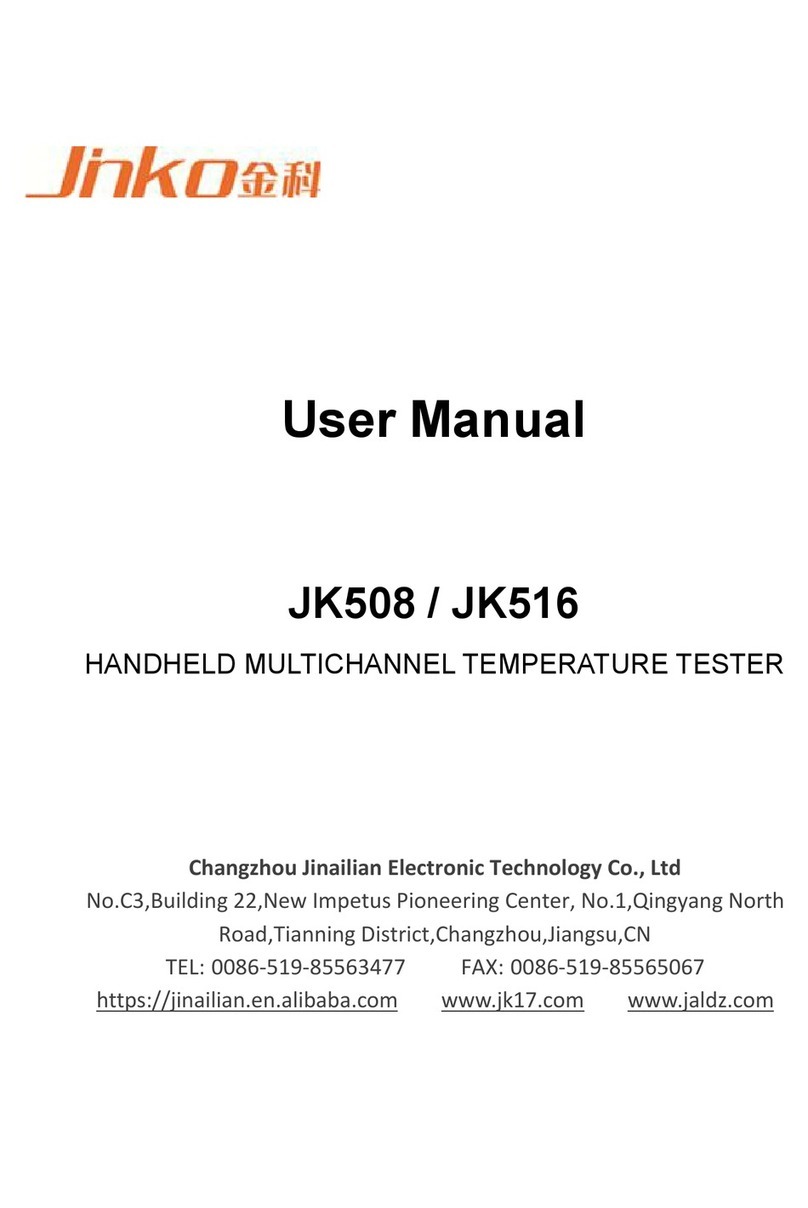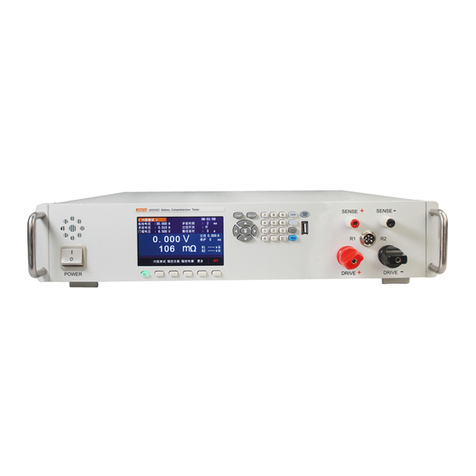
should be safer.
The higher the insulation resistance value, the better the insulation of the product. The insulation
resistance value measured by the insulation resistance test is the equivalent resistance value
formed by various related networks connected between the two test points and their
surroundings.
However, the insulation test cannot detect the following conditions:
The insulation strength of the insulating material is too weak;
Pinholes on the insulator;
Insufficient distance between parts;
The insulator is crushed and cracked;
Each of these conditions can only be detected by a withstand voltage test.
2.5 AC ground resistance test
The ground resistance test mainly measures the resistance of the contact point between the
ground wire of the appliance and the cabinet. The measurement method is based on the principle
of Ohm's law, a current flows on the contact point, and then the current and the voltage value of
the contact point are measured separately, and then the resistance value is calculated according
to Ohm's law. Usually a large current flows, which simulates the abnormal current conditions
that occur when the appliance is abnormal, as a test standard. If the contact resistance of the
ground wire on the appliance can pass the test of this harsh environment, the appliance should be
safer under normal use conditions.
Different products have different technical specifications. Basically, safety regulations require a
constant current to flow at the contact point. This current must be maintained for a specified
period of time. If the resistance of the contact point is maintained within the specified range
within the specified time, It can be determined that the appliance operates under normal
conditions, and the appliance should be relatively safe. Appropriate design and proper
construction can protect users from the threat of accidental electric shock.
Although contact resistance can be measured with a general resistance meter, the current output
by the resistance meter is usually very small, does not meet the requirements of safety
regulations, and cannot be recognized by safety inspection agencies. It must be measured with a
special ground resistance tester. For the devices that the general user will often touch, except for
the CSA specification, which requires 30 amps, most security inspection agencies require 25
amps. At the same time, the current must last 60 seconds, and the resistance must be maintained
below 100 mΩ. The specifications of appliances that are not easily touched by the user are
generally relatively loose, generally requiring a current of 10 amps, and the resistance value of
the contact point needs to be less than 500 mΩ, but the time is still 60 seconds. There are still
some international standards that are higher than the above standards, and the test value is 5


































